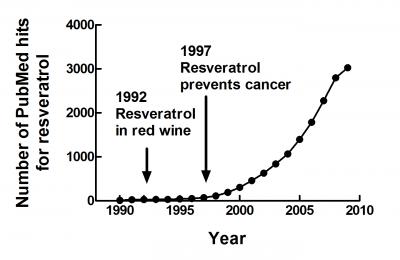Fingerprints are essential for crime dramas and look nicely distinct for each of us but what are fingerprints really for?
According to Roland Ennos, from the University of Manchester, other primates and tree-climbing koalas have fingerprints and some South American monkeys have ridged pads on their tree-gripping tails, so everyone presumed that fingerprints are there to help us hang onto objects that we grasp. This theory that fingerprints increase friction between the skin and whatever we grab onto has been around for over 100 years, but no one had directly tested the idea.
If you're a man, somewhere at some time some woman has said you just don't make love long enough. Okay, for some men all women have said that. But there are other extremes as well. Male flies of the species Drosophila montana are all about reproductive success so they keep going ... and going ... and going. And there's an evolutionary reason.
Researchers writing in the BMC Evolutionary Biology say that that females engaged in extended intercourse wait longer before they mate again, increasing the first fly's chances of fathering offspring.
Most people won't eat two cups of blueberries a day but tell them a cup of red wine will make them healthier and they seem downright happy. Red wine has cultural and historical mystique blueberries lack so it has a psychological edge.
Red wine contains a complex mixture of bioactive compounds, including flavonols, monomeric and polymeric flavan-3-ols, highly colored anthocyanins, as well as phenolic acids and the stilbene polyphenol, resveratrol. Some of these compounds, particularly resveratrol, appear to have health benefits.
But look at the PubMed citations and you'd think red wine is curing cancer and halting global warming.
Graying hairs that crop up with age could be more than just nature, they could be signs of stress, according to a new report in the June 12 issue of Cell.
The researchers say that the kind of "genotoxic stress" that does damage to DNA depletes the melanocyte stem cells (MSCs) within hair follicles that are responsible for making those pigment-producing cells. Rather than dying off, when the going gets tough, those precious stem cells differentiate, forming fully mature melanocytes themselves. Anything that can limit the stress might stop the graying from happening, the researchers said.
Who says politics and science can't mix? Well, we say they shouldn't mix but we're rare in science media. Yet sometimes political events can make for great science studies too.
Case in point, the value neuroscientists at the University of Washington got when former President George W. Bush and Iraq's Prime Minister Nouri al-Maliki had shoes thrown at them by a crazy Iraqi 'reporter' during a Baghdad news conference.
When Bush ducked and Maliki didn't flinch as the first shoe sailed toward them, it was a real-world example supporting the theory that there are two independent pathways in the human visual system.
Can you tell when your dog has done something wrong by his appearance? Not really, says Alexandra Horowitz, Assistant Professor from Barnard College in New York, in Behavioural Processes. It's mostly what you want to see.
Horowitz was able to show that the human tendency to attribute a "guilty look" to a dog was not due to whether the dog was indeed guilty. Instead, people see 'guilt' in a dog's body language when they believe the dog has done something it shouldn't have – even if the dog is in fact completely innocent of any offense.
 Opioid Addicts Are Less Likely To Use Legal Opioids At The End Of Their Lives
Opioid Addicts Are Less Likely To Use Legal Opioids At The End Of Their Lives More Like Lizards: Claim That T. Rex Was As Smart As Monkeys Refuted
More Like Lizards: Claim That T. Rex Was As Smart As Monkeys Refuted Study: Caloric Restriction In Humans And Aging
Study: Caloric Restriction In Humans And Aging Science Podcast Or Perish?
Science Podcast Or Perish?









